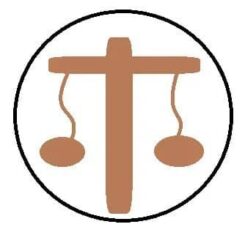We normally define a family to include a group of people who are related by blood. This definition admits of persons who are not blood related but may be recognized as being part of a family. A family may be formed by birth, by adoption (A formal public declaration by one, adopting a person as part of his or her family before witnesses), or by recognition (where it can be reasonably inferred that one treats and regards another as a member of his or her family). Where a group of persons, family, traces their root to one common male ancestor, they subject themselves to the Patrilineal System of Inheritance.
Inheritance is basically taking legal ownership and/or possession of someone’s property. Before the arrival of the Europeans, our native chiefs devised customary systems for inheriting a person’s properties, the Patrilineal and Matrilineal Systems of Inheritance. The following towns, tribes, communities, among others adopted the patrilineal system of inheritance:
The GuansThe Frafras The GonjaThe EweThe TeshieThe NunguaThe Ga-AdangbesThe Kyerepongs in the Eastern RegionAll the tribes of the Northern Region excluding the LobisA section of the Dargartis
There is a distinction between one’s immediate and wider families. The former being the one’s family, that is the family he or she originates (One’s sons, daughters and adopted children, including those one recognizes as part of his or her family) and the latter being the family one was born into (One’s mom, dad, sisters, brothers and children adopted by the parents, including those recognized by the parents as being part of their family, as well as the wider families of one’s parents). In short, unlike the wider family which is originated/formed by our parents, under the immediate family, we originate/form them.
In summation, in a patrilineal family, a person’s immediate family consists of his father, his brothers and sisters being the children of his father, and the children of his brothers. In other words, those who belong to a man’s family are his children (male and female), his paternal brothers and sisters (father’s children), children of his paternal brothers (excluding children of his paternal sisters), his paternal grandfather and the descendants of the paternal uncles in the direct male line. In a patrilineal community, a person’s wider family consists of his immediate family and the immediate families of all those who trace their ancestry through males from the common male ancestor.
By an illustration, A (male) and B (female) gives birth to C (male), adopts D (male) and recognizes E (female) as children. C and F subsequently marry and give birth to G (male) and adopt H (female). E also gives birth to J (male) and adopt K (female). D adopts L, M (females) and N (male)
A’s patrilineal family will include his father, his brothers (including their children) and sisters (excluding their children) C, D, E (A’s children), G, H (C’s children), L, M, N (D’s children).
C’s patrilineal family will include A (his father), D, E (his brother and sister), G, H (his children), L, M, N (his brother’s children).
D’s patrilineal family will include A (his father), C, E (his brother and sister), L, M, N (his children), G, H (his brother’s children).
E’s patrilineal family includes A (her father), this is because she is recognized as a member of her father’s immediate family.
REFERENCES:
[Amponsah & Ors v. Budu (1989-90) 2 GLR
291]
[Eshun
v. Johnfia [1982-83] GLR 441]
